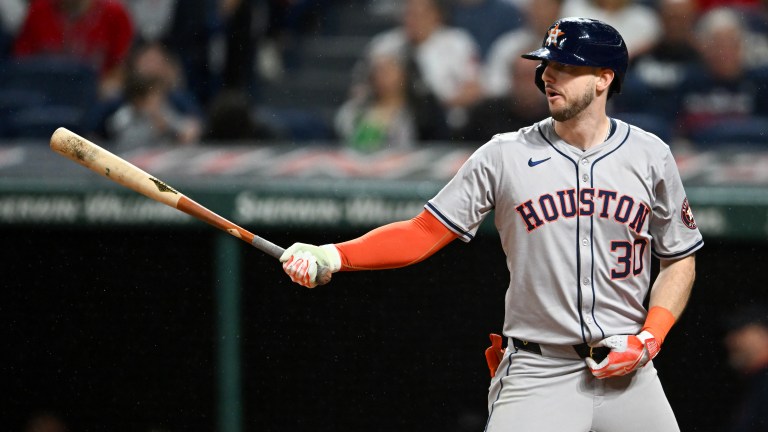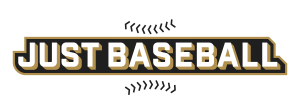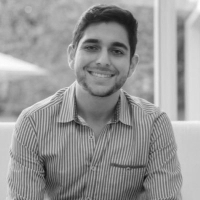With the Acquisition of Kyle Tucker, the Cubs Need to Go All in
After pulling off the biggest trade of the offseason so far, the Chicago Cubs need to keep the pedal to the metal and go all in.

It’s rare to see two teams who envision themselves as contenders swap All-Star bats, but we got just that on Friday afternoon when the Houston Astros and Chicago Cubs agreed to a trade that sent superstar outfielder Kyle Tucker to Chicago in exchange for third baseman Isaac Paredes, right-hander Hayden Wesneski and 2024 first round pick Cam Smith.
With Tucker set to become a free agent following the 2025 season and some holes on the current Astros roster, general manager Dana Brown decided to dangle the three time All-Star. After all, the writing was on the wall given the Astros reluctance to retain their stars on long-term deals unless it’s a team-friendly discount like Jose Altuve or a pre-arbitration deal like Yordan Alvarez.
Even with Tucker only coming with one year of control, the Cubs, who it could be argued have been in need of a clear-cut star for a handful of years, jumped at the opportunity to acquire the 27-year-old and his elite skill set.
Tucker has been one of the game’s most consistent hitters over the last fours seasons. His 145 wRC+ since 2021 ranks 9th in baseball behind only: Aaron Judge (189) Shohei Ohtani (165), Alvarez (163), Juan Soto (161), Mike Trout (160), Bryce Harper (150), Freddie Freeman (149) and Mookie Betts (147).
Had Tucker not missed half of last season with a shin fracture, he may be higher on that list, as he was enjoying the best offensive season of his career through 78 games, posting a 180 wRC+ and 4.2 fWAR. For reference, Tucker’s career-high in fWAR is 5.0 which he achieved twice (2021 and 2023), but he was on more than an 8-win pace in his age 27 season.
Players with more than 100 home runs, 50 stolen bases and a wRC+ above 140 since the start of the 2021 season:
— Aram Leighton (@AramLeighton8) December 13, 2024
Freddie Freeman
Shohei Ohtani
Mookie Betts
Kyle Tucker
There’s no doubting the appeal of a player like Tucker and the impact that he immediately brings to the Cubs, but given his impending free agency and the pieces Cubs president of baseball operations Jed Hoyer gave up, the trade cannot be a win in a vacuum. Unless Hoyer addresses several other needs on the roster, it’s just an exciting move that lacks a sense of reality.
The easy argument to make would be that extending Tucker immediately justifies the trade and while that may be true, it would be somewhat shocking if the Excel client did not want to test out free agency next offseason, especially after the way the Soto sweepstakes just shook out.
That’s not to say trading for Tucker means World Series or bust for a team coming off of an 83-win season, but it has to be a realistic goal.
Where Do the Cubs Stand After Landing Kyle Tucker?
Though they subtracted from their big league roster to acquire Tucker, the Cubs of course got better by acquiring one of the game’s best hitters. Not even five months after acquiring Paredes for Christopher Morel and a pair of pitching prospects to be their anchor at the hot corner for at least the next three seasons, he headlines the package going to Houston.
It makes sense that the Cubs would include Paredes in this deal as the Astros may value his skill set as highly as any team in baseball. With Alex Bregman set to find a new home via free agency and some presumed financial constraints as the team’s payroll pushed within reaching distance of the CBT, the Astros were either looking at a low-budget replacement or an internal option like Zach Dezenzo.
Paredes is a unique hitter, compensating for well below average exit velocities with an elite feel to pull the ball in the air consistently. As a result, his offense can be environment-dependent, as he reaped the rewards of Tampa’s short porch in left field and struggled to find his groove in 52 games with the Cubs. The 25-year-old finished the year with his lowest home run output of his career, leaving the yard just 19 times last season.
According to Baseball Savant, no stadium in Major League Baseball would have resulted in more home runs for Paredes than Minute Maid Park, which would have tacked on seven more home runs to his 2024 total thanks to the Crawford Boxes in left.
Even though Paredes is under control for three years opposed to Tucker’s one, the Cubs were never going to pull off a one-for-one swap. Wesneski was likely to slot into a multi-inning relief role or spot starter, but he was never going to be an obstacle in acquiring a player like Tucker. The part that I’d imagine stung the most, was parting with third base prospect and 2024 first-rounder Smith in addition to the aforementioned two.
Smith, Just Baseball’s No. 44 prospect, enjoyed a fantastic professional debut hitting .313/.396/.609 with seven home runs and a strikeout rate of just 18% in 32 games between Low-A, High-A and Double-A while looking the part at third base.
This is not to say that the Cubs “overpaid” as I believe it’s generally a silly thing to say that when a team acquires a superstar player, even if it’s only for a year, but it could be characterized as a misuse of assets, should Hoyer not aggressive address the team’s other needs.
The Cubs presumably preferred to retain their top overall prospect Matt Shaw in negotiations and for good reason. The infielder has done nothing but hit since entering pro ball in 2023 and is coming off of a 20 home run 30 stolen base season, where he put up a 146 wRC+ between Double-A and Triple-A.
Knowing what they have in Shaw as a hitter, the question has more so been where he would play defensively long term. While he has played more third base in the minor leagues, Shaw projects best at second base, which probably explains why the Cubs traded for Paredes at last year’s deadline despite Shaw being on a fast track to the big leagues.
It was speculated that second baseman Nico Hoerner could be on the way out as Shaw presents a cheaper and more offensive-minded profile, but that was also before the idea of acquiring Kyle Tucker was likely floated seriously internally.
Shaw is far from a disaster at the hot corner and with his athleticism, the hope is that he can come along further with the glove as well as overcome his fringy arm. He showed plenty of progress as well, with great reactions, good footwork and hands. However, it is worth noting that the Cubs are five months removed from going outside of the organization to address third base knowing Shaw had a 2025 ETA. Now, he is not only presumably handed the keys to the hot corner, his contingency plan defensively in Smith is gone as well.
For the sake of clarity, I am not insinuating that Shaw is incapable of playing third base, especially with the defensive progress he made on the left side of the infield over the final couple months of the season. Even with fringy defense, his offensive profile and speed should allow him to be a valuable piece and he can slide over to second base after Hoerner reaches free agency in two seasons. What I am more so trying to illustrate is the uncharacteristic aggression from Hoyer in this move.
Not only the willingness to pay a steep price, but the quick pivot and willingness to roll the dice with their top prospect making his MLB debut at a position which they preferred an external option at several months ago. In the name of acquiring Kyle Tucker, it all makes sense…if there’s more to come.
More Additions Ahead?
We know there will be more moves ahead as the Cubs still have Seiya Suzuki and Cody Bellinger on the roster, with at least one of which expected to be moved. Suzuki’s no-trade clause and Bellinger’s contract are two obstacles for the team, but the expectation is that Hoyer should be able to facilitate a deal eventually as there should be plenty of appealing teams interested in Suzuki’s plus offense and potentially a few undesirable contract matches out there for Bellinger.
Regardless, it’s unlikely a trade of either addresses the team needs to the degree that is needed to be a legitimate threat out of the National League.
Shota Imanaga and Justin Steele are a formidable duo at the top of the rotation with a respectable Jameson Taillon flanking them. After that, there’s a fair amount of risk. Signing Matt Boyd to a two-year deal is an exciting upside play after what he showed with the Guardians at the end of the season, however the soon-to-be 34-year-old has thrown just 124 total innings over the last three seasons. Javier Assad is a great story and reliable depth, but the peripherals and tendency to nibble and drive up his pitch count make expecting anything more than a No. 5 starter in 2025 likely ambitious.
In terms of young internal options, top pitching prospect Cade Horton missed the majority of last season with a right shoulder issue, Ben Brown was shut down in June due to a stress reaction in his neck and may project best as a reliever while Jordan Wicks battled both health and consistency issues last season.
The rotation is not a liability by any stretch, but it doesn’t quite look like that of a team that is pushing the chips forward on 2025…especially when you look at the bullpen behind it. An upside play like Jeff Hoffman could make sense, who similar to the Mets addition of Clay Holmes, provides some intriguing potential in the rotation with the fallback of sliding back into the bullpen where he is proven.
Walker Buehler would be another intriguing roll of the dice which could push the ceiling of the Cubs pitching staff a bit higher. Another trade could make sense as well with the Marlins likely to be open to offers on Jesus Luzardo and the Rays in the same boat with Jeffrey Springs. Likely the safest and most expensive option would be former Met Sean Manaea.
The bullpen may be the most imperative are to address for the Cubs, which Hoyer has demonstrated some urgency with already this offseason in trading for Eli Morgan from the Guardians. As fun as the breakout of Porter Hodge was in 2024, the bullpen truly lacks proven and reliable high leverage arms.
Before subtracting Bellinger and or Suzuki’s contracts, the Cubs sit nearly $30 million below the CBT threshold that most owners prefer to stay under. After slightly pushing beyond the threshold in 2024, Cubs owner Tom Ricketts provided a neutral answer as to whether he’d be willing to push beyond the soft cap again.
The penalties on CBT, they grow over time and so you want to be careful when you do it,” Ricketts told the Chicago Tribune in October. “And so if there’s ever some point in the future where there’s a large financial commitment you want to make midseason, you have to be thoughtful about it.
For the sake of being conservative, let’s assume Ricketts opts to stay below the CBT. A trade of Suzuki or Bellinger could create nearly $40 million in space with high-end relievers like Tanner Scott, Carlos Estevez, A.J. Minter and Kirby Yates available. Frankly, it wouldn’t be a bad idea to add multiple bullpen arms as the next tier provide some experience of leverage as well in Andrew Kittredge, Tommy Kahnle, David Robertson and Kenley Jansen among others.
It is a fantastic time for the Cubs to try to separate themselves in the National League Central. It’s still the Brewers division to lose, but they just subtracted Devin Williams and are unlikely to add much else. The Cardinals are reportedly trimming payroll, the Reds are coming off of a disappointing season with little moves made of consequence this offseason and the Pirates are still in what appears to be the final phases of a rebuild.
Still with some money to spend and plenty of prospect capital, it is not an extension that would make the Tucker trade a success for Hoyer and the Cubs, it’s the moves that come after it.

